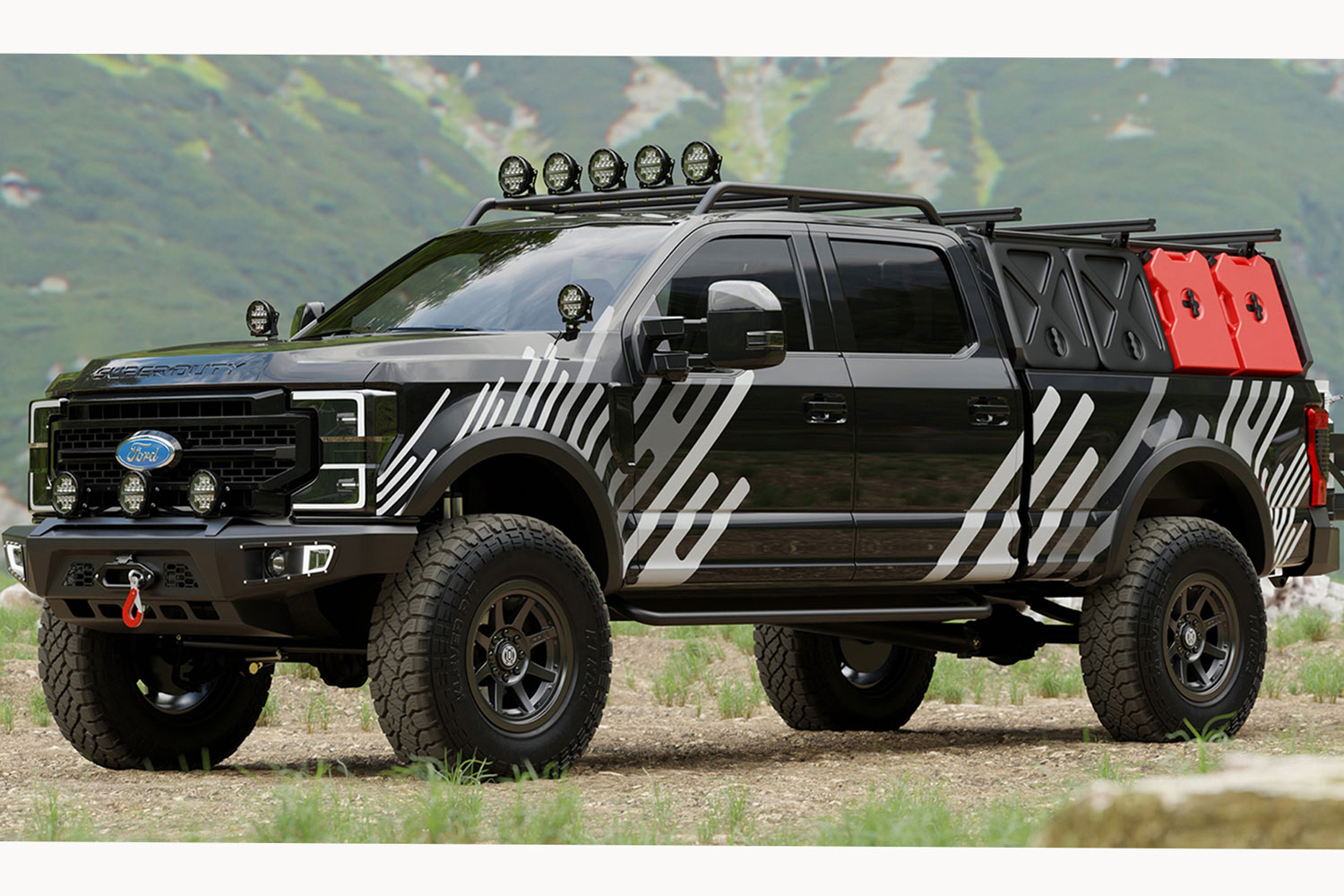What Is a Three-Quarter-Ton Truck?
Here's some help understanding this heavy-duty pickup definition.
 Ford
Ford
The market has many types of trucks, which can make it confusing when it's time to buy. If you're shopping outside the compact and mid-size segments, you'll quickly discover that full-size trucks are referred to by their "ton" rating, with three-quarter-ton and one-ton pickups standing at the top end of the scale and half-ton trucks found at the entry-level.
What exactly is a three-quarter-ton truck, and how does it differ from its one-ton sibling? Here's a look at this term for pickup-trucks.
What did a truck's ton rating traditionally mean?
Like most beasts of burden, trucks were historically organized according to how much cargo they could carry. This practice is tied to early military classifications of horse-drawn wagons and expanded to include motorized vehicles once they arrived on the scene.
With a ton weighing in at 2,000 lbs, a three-quarter-ton pickup had a cargo capacity of 1,500 lbs. This payload placed it in the mid-tier of a manufacturer's line-up, with entry-level, light-duty trucks rated at roughly 1,000 lbs (one-half a ton). Full-ton trucks capable of carrying 2,000 lbs in their bed were considered the top-tier.
What does three-quarter ton mean today?
Modern trucks no longer tie their naming schemes directly to cargo capacity. With light-duty trucks capable of hauling up to a ton in their beds, the use of the terms half-ton, three-quarter-ton, and full-ton when describing pickups sustains a tradition that is now tied more to marketing than anything else.
Still, three-quarter-ton trucks are more capable than more common half-ton full-size models due to their higher gross vehicle weight rating (GVWR). GVWR refers to the total weight that a vehicle can haul or tow, including the weight of the vehicle itself. Thanks to different suspension setups and more robust components (such as axles), a three-quarter-ton truck has a higher GVWR than a half-ton truck.
Do three-quarter-ton trucks have other names, too?
A three-quarter-ton truck is sometimes called a "Class 2B" or “Class 3” truck, a definition the Environmental Protection Agency (EPA) provides based on its gross vehicle weight rating. More commonly, however, three-quarter-ton trucks are referred to as "heavy-duty" or "HD" trucks due to their greater towing and hauling capabilities versus light-duty pickup trucks. Automakers often append the "250" or "2500" badge to a three-quarter-ton truck to differentiate them from the "150" or "1500" label applied to light-duty pickups.
Which companies build three-quarter-ton trucks?
In the United States, a handful of companies build three-quarter-ton trucks. Ford, Chevrolet, GMC, and Ram all offer 250/2500 versions of their respective full-size pickup platforms. Ford calls these trucks "Super Duty" models, while GMC and Chevrolet add "HD" badging to their three-quarter-ton trucks. The Nissan Titan XD is frequently referred to as a three-quarter-ton truck, though it has the lowest GVWR of the group.
Written by humans.
Edited by humans.
 Benjamin Hunting
Benjamin HuntingBenjamin Hunting is a writer and podcast host who contributes to a number of newspapers, automotive magazines, and online publications. More than a decade into his career, he enjoys keeping the shiny side up during track days and always has one too many classic vehicle projects partially disassembled in his garage at any given time. Remember, if it's not leaking, it's probably empty.
Related articles
View more related articles